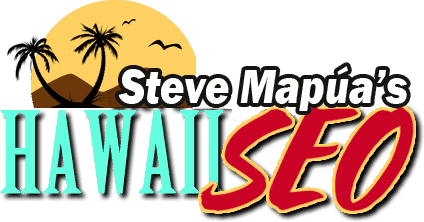Hawaii SEO – Boosting Rankings Using On-Page SEO Techniques (Part 3)
Welcome to the third part of my discussion on the different on-page SEO techniques. If you haven’t read the previous two articles, catch up on Boosting Rankings Using On-Page SEO Techniques (Part 1) and Boosting Rankings Using On-Page SEO Techniques (Part 2).
Optimize Your Actual Content
The next tip is to optimize your content in order to accommodate the target keywords you want to rank for. Before the actual writing of your piece, you have to know what the relevant keywords are. I have tackled this on What Are SEO Keywords?
Other related topics you might be interested are:
Again, do not forget to do a keyword research before doing any writing. This is an important step to find out what the searchers are looking for. You get to have an idea on what they are typing on the search box. Thus, you can create more content to satisfy this need.
Once you have figured out the list of keywords, you can integrate these phrases into the page titles, meta descriptions, and actual content.
Remember, you should not stuff keywords everywhere. Google’s Rank Brain algorithm addresses the issue on keyword relevancy and topic relevancy. For instance, if you added a keyword which is not in any way related, then, Google will rank you down.
The solution here is to produce content more relevant the chosen topic. Moreover, you have to add more meat to your content. How do you add more information to your content? Consider the information provided right infront of you. By simply doing a Google search, you get to access these 3 sources of information.
Google autocomplete
- When do a search on Google, you gives you a list of top searches related to the phrases you typed in. These suggest keywords, which are connected to your chosen keywords, are great content ideas for your website.
People Also Ask
- Aside from the autocomplete suggestions, you should also refer to the “People also ask”. These are ideas for you in case you ran out of topics for your content. You can expand further and create sub-heading regarding this topic.
Related Searches
- At the bottom portion of the Google search results page, there’s also a list of related searches. You can mention these keywords in your content. Just don’t overdo it to avoid keyword stuffing.
Improve URL Structure
In Boosting Rankings Using On-Page SEO Techniques (Part 1), I mentioned examples of a “good” and “bad” URL. I want to do a follow-up on that by telling that there should a structure among your URLs.
It’s not enough to optimize them and create descriptive URLs. Instead, you should make use of categories as a way of organization. Separate your posts (and pages) into different categories in order to help the users find whatever it is they are looking for.
Think of it as a house, a pretty exterior is useless if the interiors of the houses are topsy-turvy. Once you go inside, there’s a mess everywhere you look, and there’s no distinction whether an item belongs to the living room or kitchen. That’s why you need to assign each item into a specific category.
The same is true for your website. So, for instance, you have:
Homepage > Blog > Article — the articles are under the Blog category, which is good!
and
Homepage > Blog > Contact Us — the contact page should have its own page and it should not be under blog! These are totally unrelated things because the blog section should contain the articles. Read more on 5 Strategic Places to Put Contact Forms for More Leads.
Next? Boosting Rankings Using On-Page SEO Techniques (Part 4)

